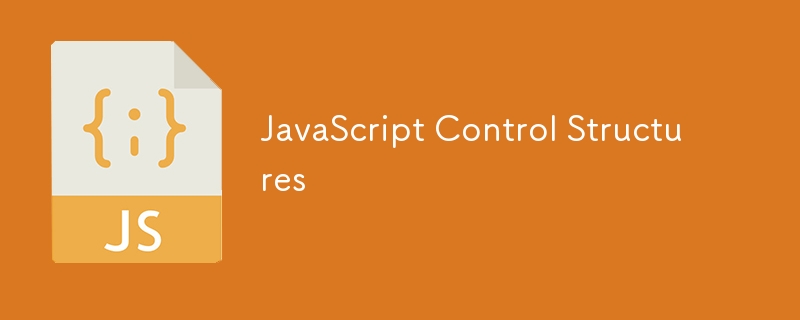Home >Web Front-end >JS Tutorial >JavaScript Control Structures
JavaScript Control Structures
- Barbara StreisandOriginal
- 2024-10-03 22:25:021074browse

JavaScript, the core language for web development, allows developers to create dynamic and interactive experiences. At the foundation of this dynamism are control structures, which guide the flow of program execution. This guide explores JavaScript control structures, covering their functionalities, use cases, and best practices.
What are Control Structures?
Control structures determine the flow of your code, allowing for decisions, repetition, and jumps based on conditions. They are essential for creating responsive and efficient applications.
Key Control Structures:
-
Conditional Statements: These allow your code to make decisions.
- if/else: Executes code blocks based on whether conditions are true or false.
- switch: A cleaner alternative to nested if statements for multiple condition checks.
- Ternary Operator: A compact, shorthand method for simple condition checks.
-
Looping Statements: These structures repeat blocks of code until a condition is met.
- for loop: Iterates over a block of code a set number of times or until a condition is met.
- while loop: Continues looping as long as a condition is true.
- do-while loop: Guarantees execution of the loop at least once, checking the condition afterward.
-
Jumping Statements: These alter the normal flow of loops.
- break: Exits a loop prematurely when a specific condition is met.
- continue: Skips the current iteration and moves to the next.
Best Practices for Using Control Structures:
- Focus on clarity over cleverness.
- Use switch for discrete choices.
- Break out complex logic into separate functions for modularity.
- Use forEach and for…of loops for clean array iteration.
- Handle errors gracefully with try...catch blocks.
Advanced Techniques:
- Recursion: Functions calling themselves for problem-solving.
- Labeled Statements: Rarely used, but offer precise control in loops.
By mastering these control structures, you’ll write code that is responsive, efficient, and maintainable. Control structures are key to developing well-structured and elegant JavaScript applications.
The above is the detailed content of JavaScript Control Structures. For more information, please follow other related articles on the PHP Chinese website!
Related articles
See more- An in-depth analysis of the Bootstrap list group component
- Detailed explanation of JavaScript function currying
- Complete example of JS password generation and strength detection (with demo source code download)
- Angularjs integrates WeChat UI (weui)
- How to quickly switch between Traditional Chinese and Simplified Chinese with JavaScript and the trick for websites to support switching between Simplified and Traditional Chinese_javascript skills

